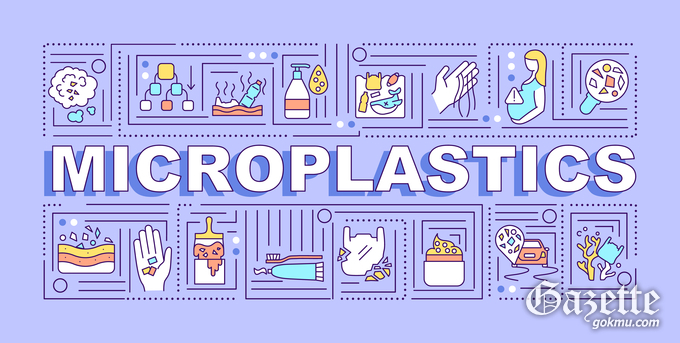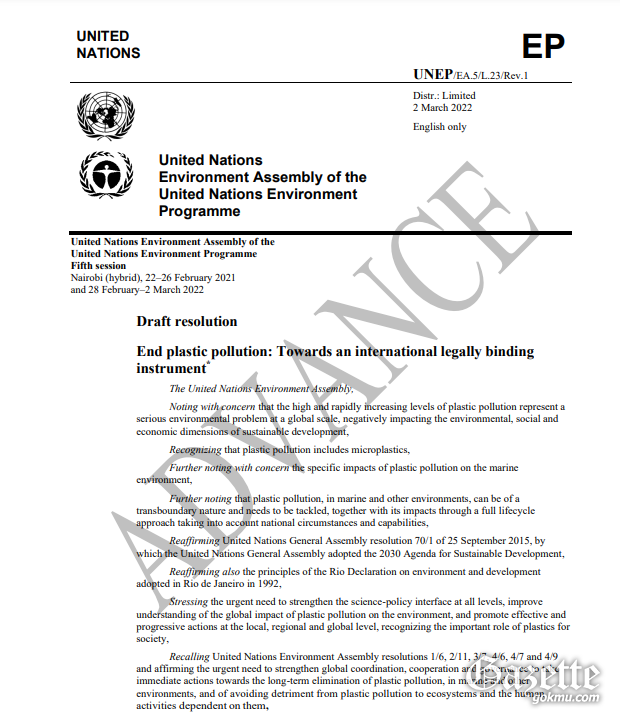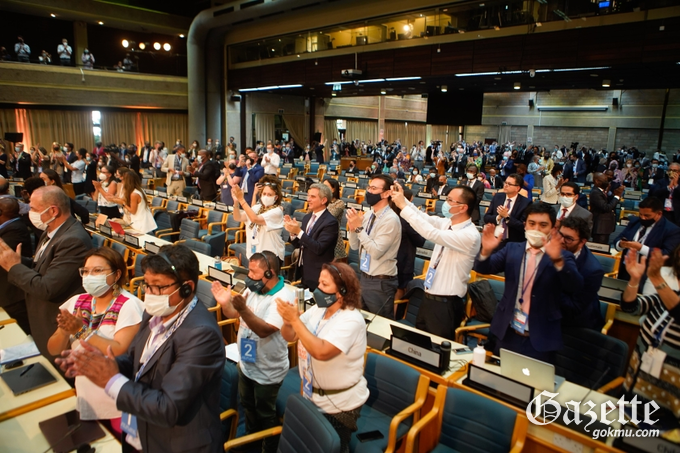
[The process of making microplastics]
As the production and consumption of disposable products increase, the seriousness of environmental pollution caused by plastic waste is increasing. If such plastic is less than 5mm in size, it is called microplastic. There are many other problems that arise from its small size.
We are too insensitive to the use of these plastics. Especially in the case of microplastics, people almost don't care more because they are invisible. Microplastics also occur when washing clothes made of synthetic fibers, and they also occur when automobile tires are worn out. Studies have also shown that the wear of tires generates 68,000 tons of fine dust a year.
So how does the plastic in our daily lives turn into microplastics and come to our table? Primary microplastics are generated from the plastics we use, and these plastics are transformed into secondary microplastics due to ultraviolet rays and waves. These do not decompose and go into the sea and encounter harmful chemicals. So microplastics become highly concentrated toxic substances, which feed on plankton. This toxic substance accumulates in marine animals that feed on plankton, and the food chain eventually reaches humans with microplastics. In this way, some experts say that we eat one credit card every week. Also, human beings eat and drink at least 50,000 microplastic particles a year, and the more they live in large cities, the more frequently they consume microplastics.
The problem with microplastics is that they are so small that they are difficult to see with the naked eye. They are not filtered out at sewage treatment facilities, so they flow into the ocean where they accumulate in fish and shellfish. Microplastics occur not only in fish but also in salt made from seawater. They have also been detected in mineral water and meat we consume. In the end, microplastics exist in everything we drink and eat. So now, microplastics are in us.
Some Studies have shown that these microplastics cause intestinal obstructions and cause inflammation, infertility, and cancer. In particular, ultra-fine plastic can enter blood vessels and accumulate in organs such as kidneys, liver, and lungs through blood flow.
A recent study by the Daegu-Gyeongbuk Institute of Science and Technology revealed that microplastics are likely to accumulate in the human brain, and beyond scale, microplastics act as neurotoxic substances that kill normal cells in the brain. As such, microplastics are extremely harmful to the human body.
Don't be insensitive to the use of plastic because you don't feel anything right away. Almost everything we use is made of plastic, and people use it without much awareness, but now we have to try to reduce our dependance on plastic. Replacing plastic products with other products, good recycling, and using public transportation alone contribute a lot to reducing plastic.
[Regulations on the production of microplastics]
Then, what specific actions should humans take to reduce microplastics?
To implement the initiatives on the agenda, United Nations Environment Assembly (UNEA) held the fifth session of the UNEA in Nairobi of Kenya from 28 February to 2 March 2022 (Resumed fifth session of the United Nations Environment Assembly, UNEA-5.2). Under the guide of the United Nations Environment Programme (UNEP), not only the representatives of the 193 Member States of the UN, but also businesses, civil society, and other stakeholders participated in the UNEA-5 session. The theme UNEA-5 is “Strengthening Actions for Nature to Achieve the Sustainable Development Goals”. This emphasizes the pivotal role that nature plays in our daily lives. Therefore, the global voice on the environment was made under the 17 Sustainable Development Goals (SDGs), which are focused mainly on ‘sustainability’.
‘End plastic pollution: Towards an international legally binding instrument’ is the official name of the resolution, and it was unanimously approved at the general meeting, attended by more than 2,000 delegates from 175 member countries and international organizations, both face-to-face and non-face-to-face. The fact that the international community has announced for the first time in its history that it will regulate the plastic problem is significant. Supporters say that it would be the most crucial environmental accord since the 2015 Paris Agreement on climate change. UNEA resolutions on marine plastic waste have been made several times, but the agreement focused on regulating the entire plastic cycle. The key is not to focus only on plastic already washed away in the sea, but to focus on the entire process of plastic production and use, recycling, and disposal.
If regulations on plastic problems become visible, it is expected to have a significant impact on the industry and economy. This is because it is difficult to find places that do not use plastic in food packaging, daily necessities, and industrial materials. If plastic regulations are implemented, the lifestyle of using disposable products can be changed to multi-use products, reuse, and recycling products, and the entire industry, including the petroleum and chemical industries, is expected to be affected.
However, there is still a long way to go. Because the international society has only created a ‘deadline’ to come up with a concrete international agreement to reduce plastic pollution by the end of 2024, but details must be made in the future.
UN member states have decided to set up an ‘intergovernmental negotiation committee’ in the second half of this year and coordinate practical content for two years. Discussions are expected on materializing plastic reduction targets, restricting plastic production and use, and developing and transferring technologies to replace plastic.
At the local level, California adopted a strategy to monitor and reduce the pollution from microplastics. To tackle microplastics, California set a comprehensive plan with 22 actions. Before everything, the strategy is mainly focused on preventing microplastics from getting into the environment. Then, it commends banning certain product materials, prioritizing reusability. As of now, cleaning up microplastics is too difficult to manage, California critically emphasizes its prevention. To top it off, discussions on the regulation of microplastics continue in various places, including the EU (European Union) and Korea. When it comes to plastic issues represented by the most crucial environmental issues excessively triggered by the COVID-19, everyone must act together. No one is exceptional. We the people, all have to be environmental activists.










